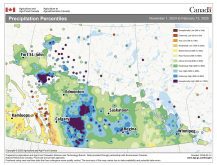Analysts say they feel optimistic about agriculture for the first time since the ethanol bubble burst in 2012-13
ORLANDO, Fla. — There are numerous reports that a United States trade deal with China is near and analysts say that will spark a big grain market rally.
U.S. secretary of agriculture Sonny Perdue told delegates attending the 2019 Commodity Classic that he is optimistic a deal is on the horizon.
“Folks, if we can come to an agreement, China needs our stuff,” he said.
“It can be a bonanza for American agriculture, not just in soybeans but in more than that.”
Perdue later told reporters that he hopes China will double or triple its annual purchases of U.S. agricultural products.
Read Also

Defence investments could benefit agriculture
A bump in Canada’s NATO spending commitments could lead to infrastructure investments that would benefit rural areas
A March 4 Reuters story said a deal is close and a summit to announce the pact could occur in a 10-day window around March 20. The Wall Street Journal suggested March 27 as the date.
There have already been goodwill gestures from China. Perdue was in U.S. president Donald Trump’s Oval Office when China’s vice-premier Liu He recently committed to purchasing 10 million tonnes of U.S. soybeans.
Trump told Perdue to go tell U.S. farmers about the commitment but Perdue didn’t leave the room.
“(Trump) looked at me after a while and he said, ‘Sonny, why don’t you tell them?’ I said, ‘Mr. President, I want to stay and hope there’s more.’ The vice-premier looked over at me and said, ‘there will be more. There will be more.’”
It is stories like that, that have Dan Basse, president of AgResource Company, starting to feel bullish about agriculture for the first time since the ethanol bubble burst in 2012-13.
Bloomberg reports that China is proposing to buy an extra US$30 billion a year of U.S. agriculture products as part of a trade deal, according to people with knowledge of the plan.
Basse said China bought nearly $20 billion of U.S. agriculture products in 2017, so the proposal would amount to a two-and-a-half-fold increase in exports of U.S. soybeans, corn, wheat and other products.
“This could usher in the next demand bull market,” he told delegates attending Bayer’s 2019 AgVocacy Forum.
The last time grain markets went on a prolonged bull run was the 2007 to 2013 period when rapidly expanding U.S. ethanol demand was bolstering corn and other grain and oilseed prices.
“That was our boomtime in terms of U.S. farm income,” said Basse.
Prices have been depressed since then and farmers are in a cycle where they range from making $50 an acre to losing $50 an acre on their crops.
But Basse is starting to notice world trade of corn and wheat moving higher.
Global wheat trade has increased by about 90 million tonnes over the last nine years. Some of the growth is happening in unexpected places with West Africa buying wheat and India importing corn.
“I’m starting to see low prices do their magic,” he said.
Supplies are getting tight enough that if there are crop production problems somewhere in the world in 2019 the price reaction will be “immediate and sustained,” he said.
“This gives me optimism that maybe we’re getting close to changing the cycle in agriculture.”















